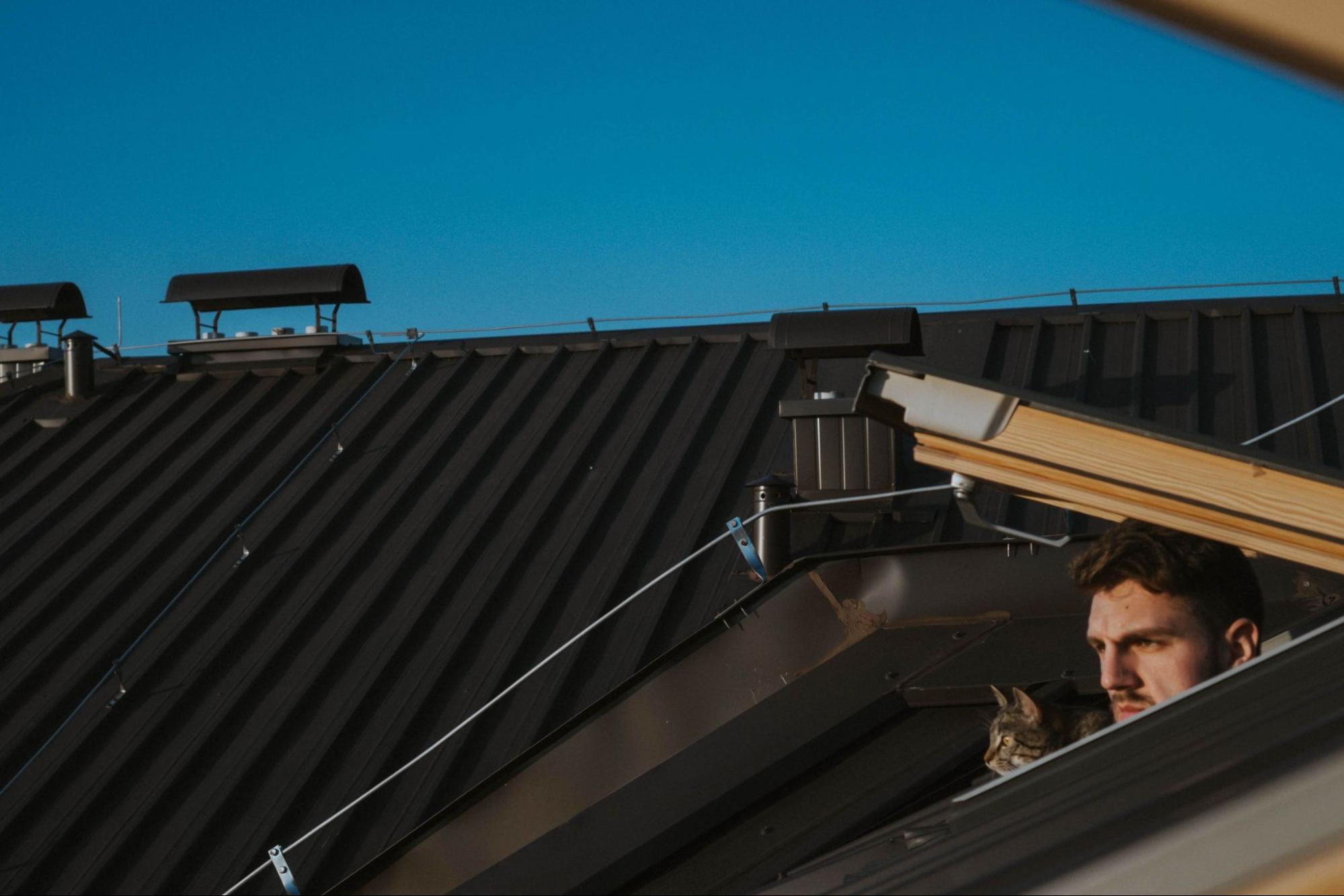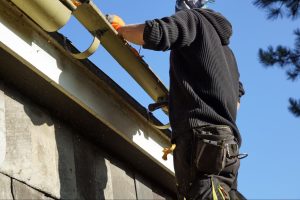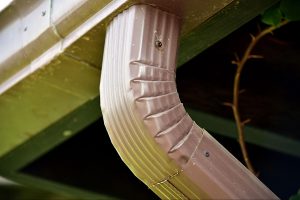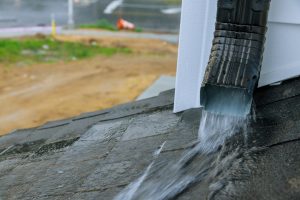Roofs do more than keep out the weather; they quietly protect your building’s structure day after day. But when it rains, that protection depends on how well the roof handles water. If it fails, the damage can creep in fast: stained ceilings, mold growth, and even structural decay. Many building owners and managers are stuck choosing between roof scuppers and drains, unsure which is right. That decision matters more than most realize and can save or cost thousands.
What Are Roof Scuppers and How Do They Function?
Roof scuppers are simple yet effective openings built into parapets or perimeter walls. They let water exit the roof before it builds up. Unlike internal systems, scuppers rely on gravity and open flow. They’re often used in commercial or industrial roofs with flat or low slopes.
Definition and Basic Function
A roof scupper is an outlet set at the roof’s edge, usually through a wall or parapet. It provides a direct escape route for standing water. Water flows from the scupper, dropping to the ground or entering a downspout system. The system is external and evident, which helps with maintenance but may affect aesthetics.
Types of Scuppers You Might Encounter
There are several roof scuppers, each suited to a specific setup. Channel-type scuppers direct water through a sleeve or duct. Through-wall scuppers pass water through the building’s exterior and into downspouts. Open scuppers leave the outlet exposed for quick drainage. Materials like copper, aluminum, or stainless steel are standard. Placement and sizing depend on roof dimensions and expected rainfall.
How Scuppers Move Water Off the Roof
Scuppers use gravity to drain water away from the roof’s edge. They work best when installed with a slight slope directing water toward the outlet. Water flows fast and visibly during heavy storms, giving building managers a real-time look at drainage performance. However, if blocked by debris, scuppers may overflow and cause streaking on exterior walls.
Overflow Scuppers for Backup Protection
Overflow scuppers act as a second line of defense. They’re set slightly higher than the main scuppers. If primary drainage clogs or fails, water exits through the overflow scuppers. It prevents ponding or pressure damage to the roof membrane. Many building codes now require them in commercial roof designs.
What Are Roof Drains and Their Role in Drainage
Roof drains work quietly beneath the surface, pulling water through the roof into interior pipes. This setup is typical in larger buildings where exterior drainage isn’t practical. These systems offer a sleek, invisible solution but require more engineering and upkeep.
Basic Definition and How Roof Drains Work
Roof drains are plumbing fixtures embedded into the roof surface. Water enters through a strainer and passes into a pipe system. These pipes run through the interior of the building and connect to storm sewers or collection tanks. The system is hidden but carefully designed. A proper slope toward each drain ensures efficient water removal.
Key Components of a Roof Drain System
Each roof drain includes a dome strainer to block debris. Beneath that is a sump or bowl that channels water into the piping system. Flashing keeps water from seeping around the base of the drain. The connected piping runs vertically or horizontally, depending on the building layout. Together, these parts form a sealed, secure drainage path.
Water Flow and Drainage Performance
Internal drains work best on large, flat roofs where water must travel far. A correctly sloped deck directs water toward each drain head. During storms, the water disappears quickly without visible runoff. Snowmelt is also handled efficiently since drains are insulated and protected from freezing. However, a clogged pipe inside the building is more difficult to detect and fix.

Comparing Scuppers and Roof Drains in Real Use
Choosing between these systems isn’t just technical; it shapes how a building looks, functions, and ages. Each system offers unique benefits and challenges. The wrong call can lead to leaks, costly repairs, or safety concerns.
Installation Demands and Long-Term Maintenance
Scuppers are relatively easy to install. They don’t require internal plumbing or complex connections. Roof drains, in contrast, must be placed carefully during construction or major renovations. They need sloping, flashing, insulation, and access panels. Maintenance is easier with scuppers because the drainage path is visible and accessible.
Aesthetic and Structural Considerations
Scuppers are visible outside the building. While some architects integrate them artistically, others find them intrusive. Roof drains stay hidden and maintain clean exterior lines. However, they occupy space inside walls or ceilings and can complicate other systems. Either method affects how the building is framed and sealed.
How Each System Handles Harsh Weather
If properly sized and clear, scuppers shed water rapidly in heavy rain. However, if blocked, overflow can stain walls or erode landscaping. Roof drains can handle larger volumes through multiple intake points. However, they risk clogging from roof debris or freezing if poorly insulated. Buildings in wet or snowy climates rely more on drains, especially when combined with heating cables or sump pumps.
Costs and Life Cycle Value
Scuppers have a lower upfront cost, especially on simple buildings. They require less material, planning, and labor. Roof drains cost more at installation due to plumbing needs. However, large commercial roofs often offer better long-term performance. Choosing based on lifecycle costs, not just price, avoids future repair headaches.
When Scuppers Are the Better Option for Your Roof
Scuppers work better in certain situations. They’re ideal for flat or low-sloped roofs with short water travel distances. Depending on your goals, their simplicity and visibility can be tangible assets.
Roof Types and Climates Suited for Scuppers
Scuppers fit best on small to medium roofs that slope slightly. These roofs need basic runoff systems rather than deep drainage. The quick-shedding design benefits areas with light or moderate rainfall. It’s also valuable for dry regions where water rarely pools. In those conditions, scuppers can perform well with minimal upkeep.
Maintenance and Access Advantages
Because scuppers are exposed, they’re easy to check and clean. Leaves, trash, or ice are visible and removable by hand or tool. There’s no need to open walls or ceilings for inspection. During storms, you can confirm they’re flowing properly by watching runoff. That saves time and gives confidence in the system.
Cost Efficiency and Budget-Friendly Design
Scuppers are budget-friendly on basic buildings. They don’t require interior pipe routing or special flashing kits. Many buildings use off-the-shelf materials that keep costs low. If replacement is needed, it’s fast and inexpensive. For owners managing multiple rooftops, scuppers are easier to scale.

When Roof Drains Offer the Stronger Long-Term Payoff
Roof drains are better for complex, high-volume drainage needs. Their strength lies in their coverage, capacity, and hidden design. They’re built for cities, cold climates, and tight architectural constraints.
Ideal Conditions for Using Roof Drains
Internal drains benefit large, flat commercial roofs with heavy water loads. In cities, external runoff is often restricted, making internal drainage necessary. Cold-weather locations use roof drains to protect pipes from freezing. Buildings with green roofs or rooftop HVAC systems may require drains to avoid runoff conflicts. Drains are also common in hospitals, schools, and high-rise structures.
Clean Exteriors and Drainage Integration
Roof drains maintain sleek, unbroken facades. Since all drainage happens inside, there’s no need for external gutters or downspouts. That allows more freedom in building layout and materials. Architects can prioritize aesthetics without compromising drainage. This integration improves resale and reduces external wear.
Compatibility With Water Reuse and Filtration Systems
Some commercial buildings collect rainwater for irrigation or greywater use. Roof drains connect easily to cisterns, filters, and valves, making them part of a larger water conservation strategy. Filters prevent debris from entering collection tanks. This setup is more complex with open scuppers, which are more exposed.
Choosing Between Scuppers and Roof Drains Wisely
Every building is different, and there is no one-size-fits-all drainage system. Matching your roof type, climate, and goals to the proper drainage system is key to avoiding long-term issues.
Questions to Ask Before Deciding
Is your roof flat or sloped? How much rainfall do you receive yearly? Do you want drainage to be visible or hidden? What’s your budget now and over the next ten years? These questions help narrow down the right solution fast.
Why Professional Input Matters
Contractors and architects understand building codes, roof loads, and storm data. They can recommend the correct number of drains or scuppers. Professional gutter services also design scuppers for future maintenance. What’s accessible today may not be tomorrow. Working with someone skilled in drainage systems helps avoid hidden flaws.
Protect Your Building by Choosing the Right Roof Scupper
A roof scupper might look simple, but it’s your building’s silent safeguard. During storms, a well-placed scupper quickly directs water off the roof. Ignoring the correct scupper setup can mean slow leaks, wall damage, or costly structural repairs. If your building relies on guesswork instead of planning, you’re gambling with every rainfall. Now is the time to get precise about your roof’s protection because water waits for no one.
Visit the Quality Rain Gutters Inc. blog for smart roofing solutions and trusted guidance.





